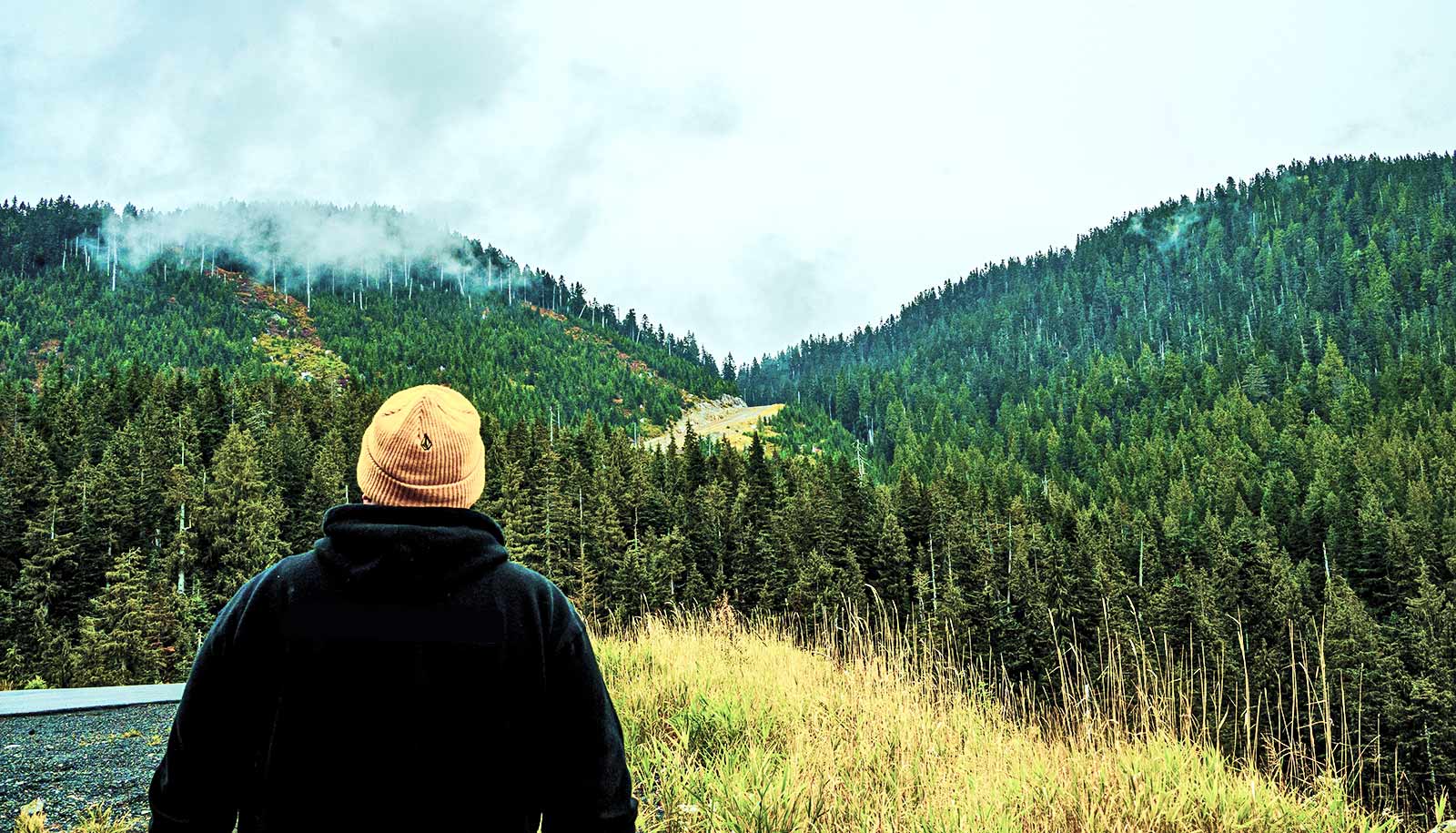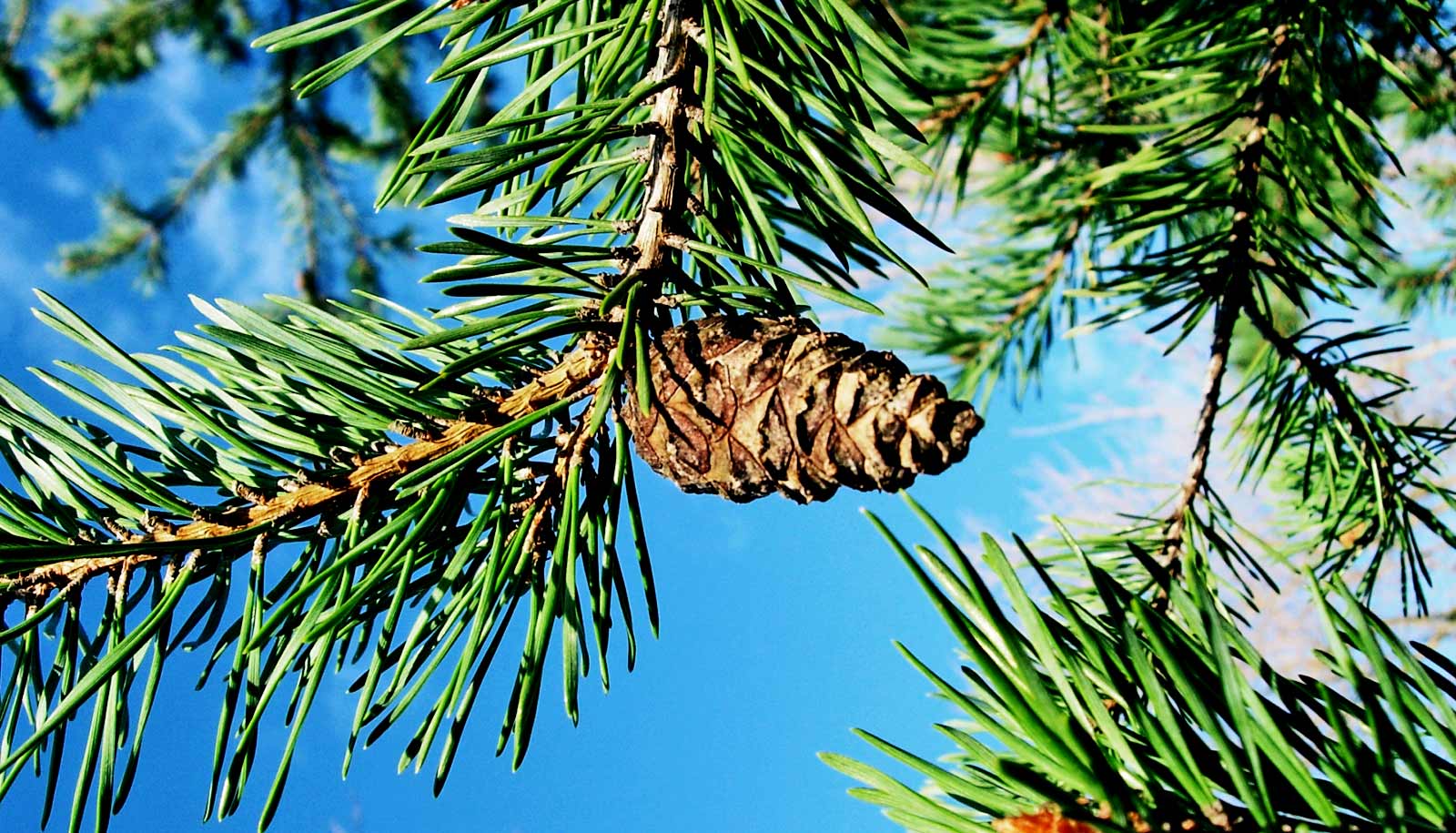By 2070, climate change could cause the local loss of over a quarter of ectomycorrhizal fungal species from 3.5 million square kilometers of North American pine forests.
That’s an area twice the size of Alaska, about 1.3 million square miles.
If you indulge in truffles, or porcini and chanterelle mushrooms, you have enjoyed a product of ectomycorrhizal fungi. Forming symbiotic relationships with plants—including pine, birch, oak, and willow tree species—these fungi have existed for millions of years, their sprawling filaments supporting ecosystems throughout their reach.
“These are critical organisms for the functioning and the health of forests,” says Kabir Peay, associate professor of biology at Stanford University and senior author of the study in the Journal of Biogeography. “We have evidence to suggest that these fungi are as susceptible to climate change as other kinds of organisms and their response may be even more important.”
Trees and their ectomycorrhizal fungi friends
Previously, the Peay lab had mapped the global distributions of forests where trees associate with different types of symbiotic fungi, finding that over 60% of all trees on Earth currently associate with ectomycorrhizal fungi. Now, by learning more about the communities these fungi form in different climates, the researchers projected how climate change might affect them in the future.
“In terms of ecosystem function … ectomycorrhizal fungi are among the last microbes you want to lose.”
Over several years, the Peay lab has gathered about 1,500 soil samples from 68 pine forests, which represent a swath of North America from Florida to Alaska. In past work, they sequenced DNA in each sample to understand what fungal species live in that soil, and in what abundance. Their results, published previously, suggested that fungi were different in each region, contradicting a common assumption that those communities would look similar in most places in the world. They followed that up by mapping the associations between trees and symbiotic microbes around the world.
For their latest paper, Brian Steidinger, a postdoctoral scholar in the Peay lab, explored the relationship between these geographical fungal patterns and historical climate data.
“We took soil from the cores and climatic data unique to each site,” says Steidinger, who was lead author of the study. “We found that climate was by far the most important predictor of contemporary fungal diversity patterns across North America.”
Climate change and the pine forests
Steidinger also found that different regions of North America had unique optimal temperatures for fungal diversity. For example, cold boreal forests had a diversity peak around 5° C (41° F) mean annual temperature, while Eastern temperate forests peaked in diversity near 20° C (68° F).
The researchers then applied these data to predict future diversity, given projections of climate change that the Intergovernmental Panel on Climate Change produced. Because of the regional differences in optimal climate for fungal diversity, some forests, particularly those in the North and Northwest, could experience major decreases in fungal diversity.
“According to our models, climate change over the next 50 years could eliminate more than a quarter of ectomycorrhizal species inside 3.5 million square kilometers of North American pine forests,” says Steidinger. “That’s an area twice the size of Alaska.”
Other regions, such as the Eastern temperate forests, could experience gains of 30 to 50%—assuming it is as easy to develop new species as to lose them.
‘Kind of shocking’
“One of the things that’s kind of shocking and a little bit scary is that we predict there will be some pretty significant decreases in diversity in western North America, well known culturally for fungal diversity and for people who are interested in collecting edible mushrooms,” Peay says.
Ectomycorrhizal fungi form a sheath around their hosts’ roots, which can help prevent erosion and protect roots from damage and disease. The fungi seem to boost carbon storage in soil by slowing down decomposition and encouraging the buildup of soil. They also help their host trees grow more quickly—and therefore take in more carbon—by improving their ability to take in nitrogen, which they need in order to grow.
“In terms of ecosystem function, particularly buffering the atmosphere against climate change, ectomycorrhizal fungi are among the last microbes you want to lose,” says Steidinger. “We’re expecting to lose the species that seem to be the most functionally intense—the ones with the greatest enzyme activity, the ones that forage out the farthest.”
Building on this work, the researchers are considering studying forests with low diversity of fungi and conducting experiments to better understand how these altered fungal communities might function in the future.
“For microbiome work, I feel like we’re in a new era of discovery,” says Peay. “Like Darwin and Wallace getting on ships and going to new places and seeing new things and changing the way they view the world, that is what is happening in this field.”
Coauthors of this paper include researchers from Boston University; Duke University; and University of California, Berkeley. The National Science Foundation supported the work.
Source: Stanford University



